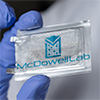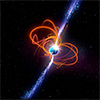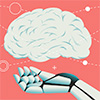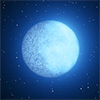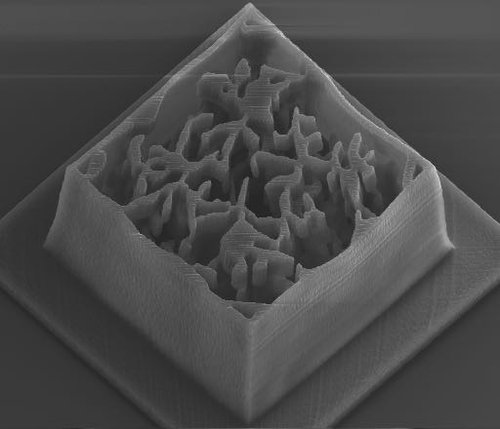Jul 20, 2023 (Nanowerk Spotlight) Preventing animal epidemics is of paramount importance because they can directly impact food and nutritional safety, the economy, and can lead to outbreaks of zoonotic diseases that pose a threat to human health. The spread of infectious diseases in animals causes significant economic losses for...
Metals can heal themselves – revealing possibility of self-healing machines
Jul 19, 2023 (Nanowerk News) Scientists for the first time have witnessed pieces of metal crack, then fuse back together without any human intervention, overturning fundamental scientific theories in the process. If the newly discovered phenomenon can be harnessed, it could usher in an engineering revolution — one in which...
Aluminum materials show promising performance for safer, cheaper, more powerful batteries
Jul 19, 2023 (Nanowerk News) A good battery needs two things: high energy density to power devices, and stability, so it can be safely and reliably recharged thousands of times. For the past three decades, lithium-ion batteries have reigned supreme — proving their performance in smartphones, laptops, and electric vehicles....
Experiments reveal nexus of vibrational and electronic dynamics
Jul 19, 2023 (Nanowerk News) Nearly a century ago, physicists Max Born and J. Robert Oppenheimer developed an assumption regarding how quantum mechanics plays out in molecules, which are comprised of intricate systems of nuclei and electrons. The Born-Oppenheimer approximation assumes that the motion of nuclei and electrons in a...
Astronomers find new type of stellar object
Jul 19, 2023 (Nanowerk News) An international team led by astronomers from the Curtin University node of the International Centre for Radio Astronomy Research (ICRAR) has discovered a new type of stellar object that challenges our understanding of the physics of neutron stars. The object could be an ultra-long period...
Researchers achieve interdimensional superconductivity
Jul 19, 2023 (Nanowerk News) In the typical materials that we encounter every day—and even in state-of-the-art chips in computers—electrons move around in three dimensions (3D). However, scientists can force electrons to move around in two dimensions (2D) by creating ultra-thin materials like graphene. In this work, published in PNAS...
Teaching robots to teach other robots
Jul 19, 2023 (Nanowerk News) You’re a poker wizard. A friend knows all about French cuisine. Another friend is a Mozart expert. The three of you get together and share knowledge about your respective expertise. Each of you leaves learning something from the other two. People learn a lot by...
Two-faced star exposed
Jul 19, 2023 (Nanowerk News) In a first for white dwarfs, the burnt-out cores of dead stars, astronomers have discovered that at least one member of this cosmic family is two faced. One side of the white dwarf is composed of hydrogen, while the other is made up of helium....
The promise of liquid crystals for biomedicine
Jul 19, 2023 (Nanowerk Spotlight) Liquid crystals (LCs) are a distinct state of matter exhibiting properties between crystalline solids and isotropic liquids. Their partially ordered structure gives rise to unique characteristics that have recently shown promise for diverse biomedical applications. LCs can be categorized based on their formation mechanism. Thermotropic...
Evolving and 3D printing new nanoscale optical devices
Jul 17, 2023 (Nanowerk News) A new technology being pioneered at Caltech is allowing researchers to "evolve" optical devices and then print them out using a specialized type of 3D printer. These devices are made of so-called optical metamaterials that derive their properties from structures so small they are measured...



